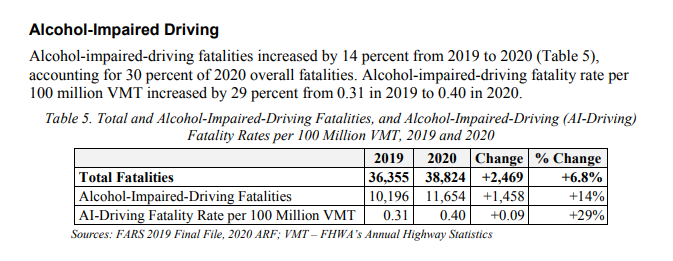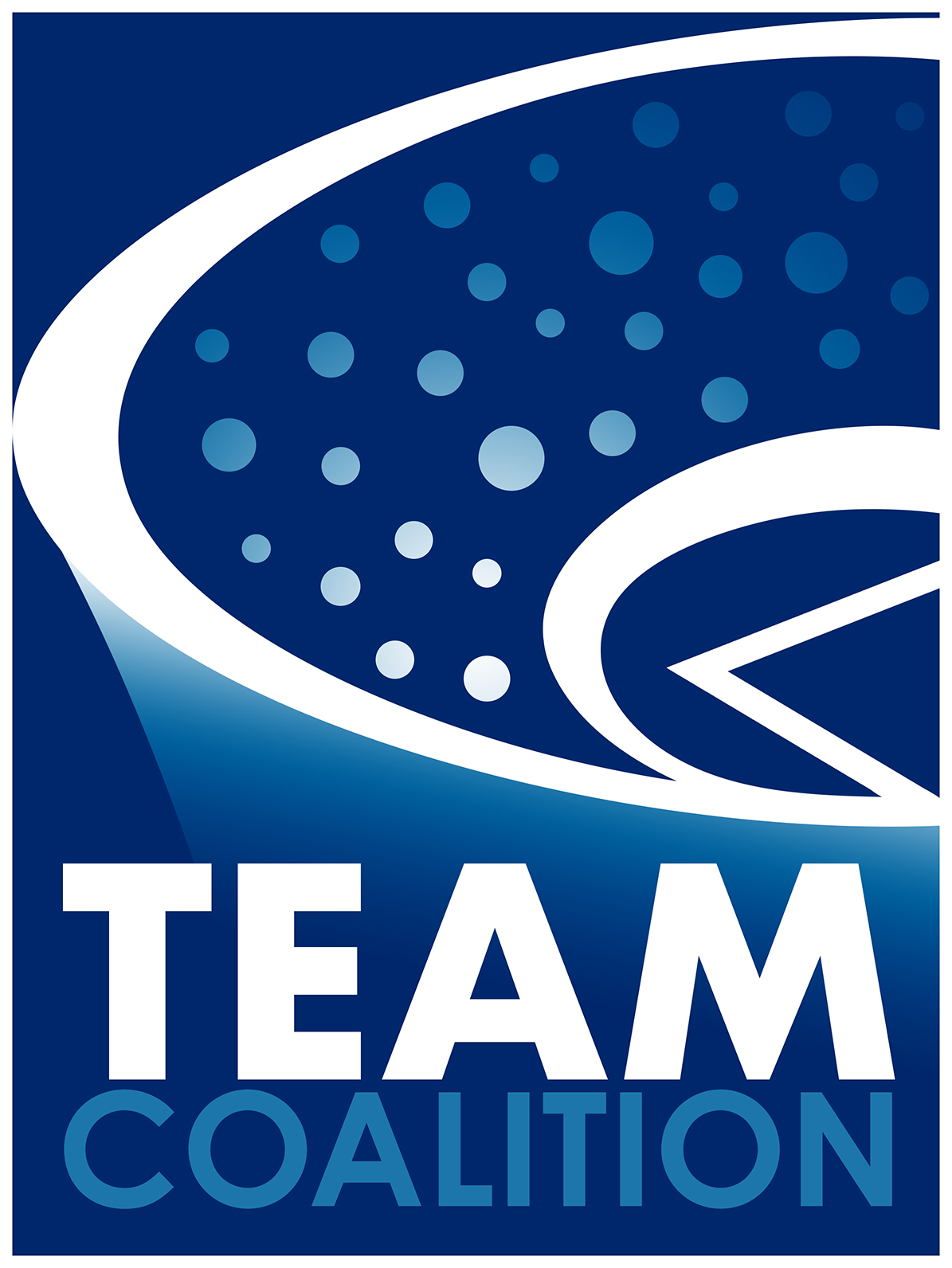March 26, 2021, National District Attorneys Association (NDAA) September 28, 2020, National District Attorneys Association (NDAA) “Fatalities in police-reported, alcohol-involved crashes, as a percentage of all fatalities, increased in June (21% [20] versus 20% [19]), August (21% [20] versus 19% [19]), and October and November (18% [20] versus 17% [19]). Total estimated fatalities in police-reported, alcohol-involved crashes increased by 9 percent from 2019 to 2020. This measure is different from NHTSA’s traditional reporting of alcohol impaired-driving crashes, which is based on both reported and imputed blood alcohol concentration (BAC) values. BAC values have a significant reporting lag and will be finalized later this year, which is why this analysis used police-reported alcohol involvement to get an indication of changes from 2019 to 2020.”
1/31/2022: NASCAR Busch Light Clash at Los Angeles Memorial Coliseum
1/31/2022: New York Knicks, Rangers and Responsibility Has Its Rewards
12/17/2021: RHIR Sweepstakes Winner from NYC FC Celebrates 2021 MLS Cup
12/17/2021: TEAM Coalition Proudly Welcomes Uber as New Member
12/17/2021: Super Bowl LVI
10/14/2021: Decide to Ride
10/14/2021: GHSA Annual Conference
9/14/2021: Responsibility Has Its Rewards at NFL Kickoff Experience
8/9/2021: TEAM Coalition’s Best Practices on Display
7/15/2021: Have a Responsibility Plan this Fourth of July
6/18/2021: Chicago White Sox Lead League in Move to Ballpark app for Responsible Fan Pledge
5/11/2021: Carolina Panther Responsibility Program
4/12/2021: Busch NA RHIR Sweepstakes
3/10/2021: Have a Responsibility Plan this St. Patrick’s Day
2/8/2021: SoFi Stadium Provides Fans with Unique Experiences with TEAM Online Training
2/8/2021: Help Save Lives This Super Bowl LV
1/19/2021: Lyft and GHSA Partner for Holiday Responsibility Program
12/15/2020: Concessionaire Aramark and TEAM Online Employee Training
10/19/2020: Texas A&M You in the Driver Seat App
10/19/2020: Anheuser-Busch Global Beer Responsible Day
9/24/2020: Buffalo Bills – Facility Alcohol Management
10/14/2021: Rishi Nigam, CEO and Co-Founder
9/14/2021: Rachel Lewis, Director of Operations
8/9/2021: Vicki Malko, Director of Events and Catering
7/15/2021: Andy Konkle, Chartwells at Cleveland State University
6/18/2021: Randy Mayne, Centennial Management
5/11/2021: Greg Overstreet, Mercedes-Benz Stadium
4/12/2021: Chloe Janfaza, Las Vegas Raiders
3/10/2021: Bill Squires, Consultant
2/8/2021: Sadaf Usmani, Guest Services Manager
1/19/2021: Billy Langenstein, NFL
12/15/2020: Julie Taylor, Chicago White Sox
10/19/2020: Aaron Schmitt, S.A.F.E. Management, Mercedes-Benz Stadium
9/24/2020: Marie Eslick, Delaware North Sportservice, Milwaukee
8/24/2020: Anne Wheat, MetLife Stadium
8/9/2021: Jeff Jannarone, Director-At-Large
7/15/2021: Matt Dye, Membership Committee Chair
6/18/2021: Jordan Jiloty, Chairman
5/11/2021: Jeff Stonebreaker, Secretary and Co-Chair of the Governance & Finance Committee
4/12/2021: Kevin Tedesco, Training Committee Chair
3/10/2021: Lester Jones, Treasurer and Governance & Finance Committee C0-Chair
2/8/2021: Russ Simons, Director-At-Large
1/19/2020: Ashley Cahill, Marketing & Communications Committee Chair
12/15/2020: Rishi Nigam, Director at Large
10/19/2020: John Huff, Vice-Chair
2022 First Quarter Early Estimates Show Record Increase In Fatalities Nationwide
NHTSA Launches 2022 Labor Day ‘Drive Sober or Get Pulled Over’ Campaign

2021 Early Estimates NHTSA Crash Data
2020 NHTSA Crash Data

Rideshare Volume and DUI Incidents in Atlanta, Georgia; Chicago, Illinois; and Fort Worth, Texas
Importance of rideshare
Rideshare services, more now than ever, offer an affordable, convenient, and accessible alternative, and riders are responding in a positive way. An annual economic survey conducted by Lyft, found that 71 percent of riders reported they are less likely to drive substance-impaired due to the availability of Lyft. As previously mentioned, NHTSA has documented that most alcohol impaired driving fatalities occur on nights and weekends, this information aligns with the frequency of Lyft’s reported ride use where the majority of Lyft rides take place outside of commute hours, such as nights and weekends. In addition, according to a recent analysis by Lyft, more Lyft pick-ups and drop-offs occur in areas where entertainment and nightlife establishments occur and during the evening (Hutchinson, 2020). Previously mentioned research by Kurtz showed that pairing marketing and messaging to utilize ride-sharing alternatives to these demographics can reduce the incidence of impaired driving which supports the analysis of data presented in this report.Rideshare Volume and DUI Incidents in Target California Communities
Importance of rideshare
It is clear that given the option to have a sober ride rather than driving impaired, rideshare offers an affordable, convenient, and accessible alternative. However, the option lies within the driver to do so. In this regard, an annual economic survey conducted by Lyft, found that 71% of riders reported they are less likely to drive substance-impaired due to the availability of Lyft. As previously mentioned, NHTSA has documented that most alcohol impaired driving fatalities occur on nights and weekends, this information aligns with the frequency of Lyft’s reported ride use where the majority of Lyft rides take place outside of commute hours, such as nights and weekends. In addition, according to a recent analysis by Lyft, more Lyft pick-ups and drop-offs occur in areas where entertainment and nightlife establishments occur and during the evening (Hutchinson, 2020). It is evident that Lyft has positioned itself as an accessible alternative to driving impaired especially during the days, times, and locations most needed.2020 Early Estimates of Motor Vehicle Traffic Fatalities and Fatality Rate by Sub-Categories
2020 Early Estimates Motor Vehicle Fatalities
2019 Traffic Safety Facts
NHTSA 2021 Communications and Traffic Safety Events Calendars
Super Bowl Fans Don’t Let Fans Drive Drunk Campaign
